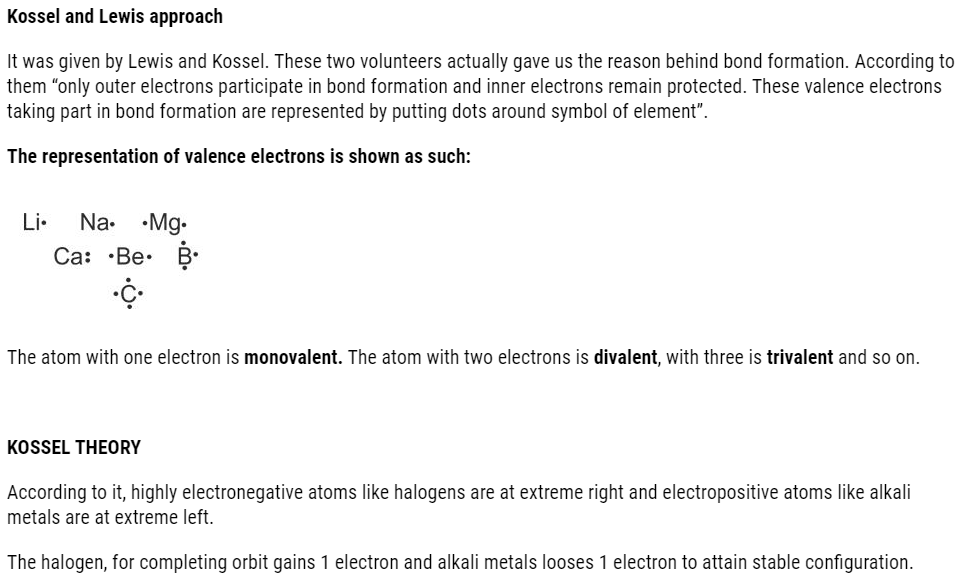PART 1
PART 2
Introduction
We have studied about so many elements till now .Out of 114 elements, most of them occur in combined state. Only noble gases occur in atomic state otherwise, most of them exist in molecular or combined form.
The combined state is formed by combination of elements that is a chemical bond. Like families, have connections in the same way the attraction of chemical species is called chemical bond.
The reason behind the formation of chemical bond is to obey octet rule .According to this rule, “every element needs to attain stability. For this, the elements either loose or gain electrons to attain 8 electrons in its outermost shell” .But certain violation were seen like in case of hydrogen, the atom has tendency to attain only 2 electrons in valence shell .So, in case of it the rule is violated and is called as Duplet rule.
Other violations are: In certain molecules, the deficient octet is seen. For example in H2 ,whereas in others the central atom has expanded octet that is more than 8 electrons like in SF6.
When two atoms come closer, their outer electrons repel each other and finally they stop at a distance where the released energy is more .As less energy corresponds to maximum stability than at that distance the chemical bond is formed.

